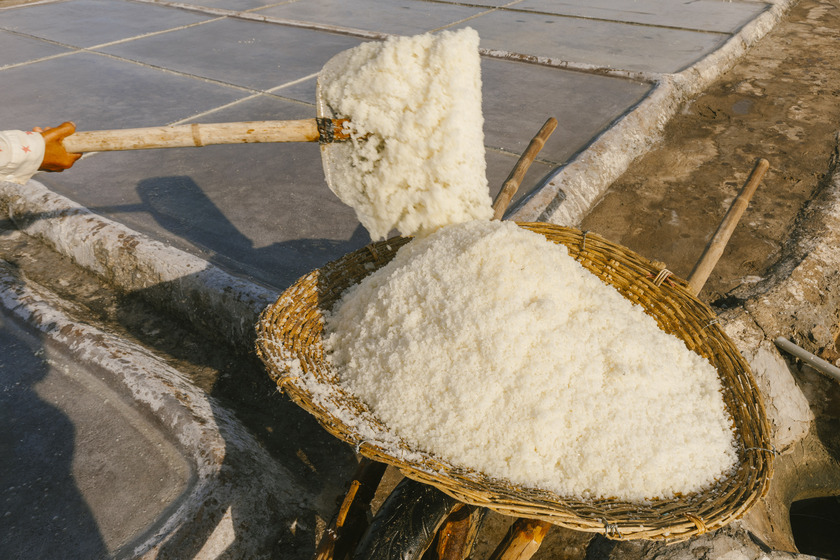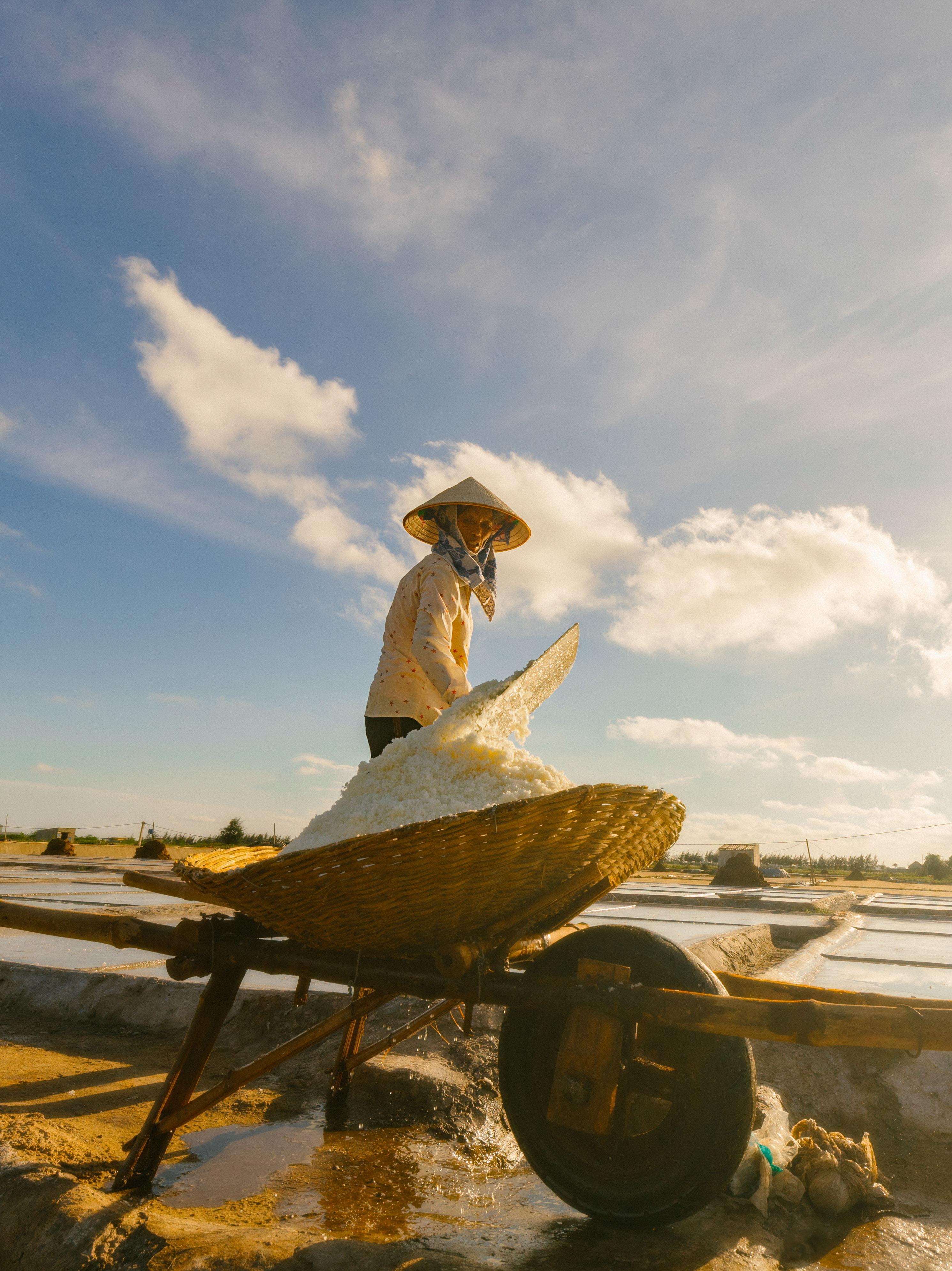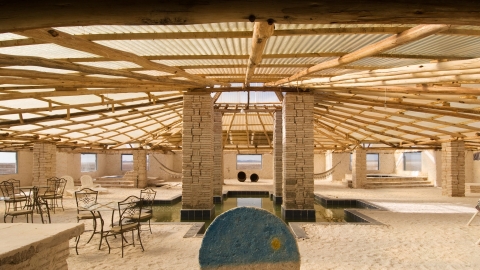Bach Long Salt Fields - A masterpiece in the heart of Nam Dinh
Located in Bach Long commune, Giao Thuy district, Nam Dinh province, Bach Long salt field has an area of up to 230 hectares - one of the communes with the largest salt fields in the Northern region. The history of the formation of this place is closely linked to the long-standing traditional salt making profession of the local people.
Since ancient times, before the French colonialists invaded, Bach Long was a land filled with alluvial deposits from the sea, attracting people from all over to live and build villages. Because the coastal location was not favorable for rice cultivation, people took advantage of the abundant saltwater to develop the salt industry, turning this place into the most prosperous "salt granary" in the region.
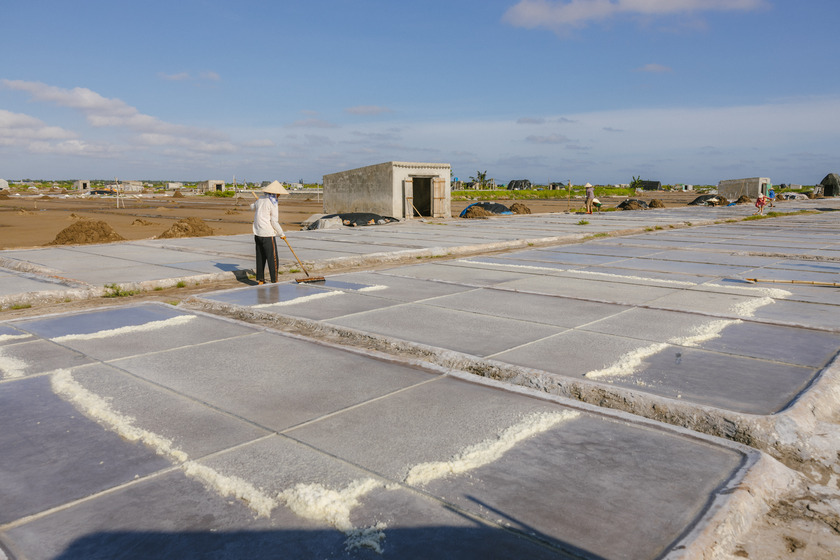
Bach Long salt field has an area of up to 230 hectares - one of the communes with the largest salt fields in the Northern region.
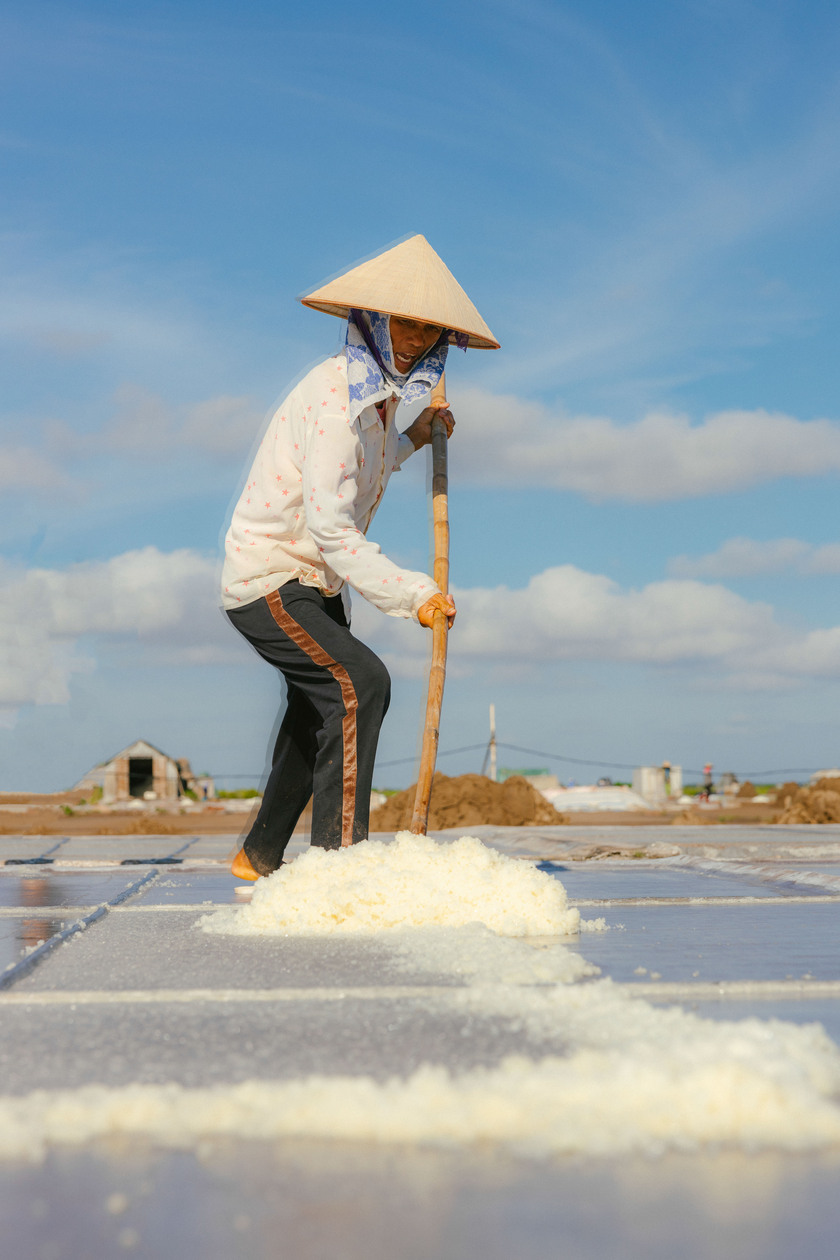

Today, more than 1,000 households in Bach Long are still preserving and promoting this traditional craft. Bach Long salt fields are not only the main source of income for local people but also become an attractive tourist destination attracting visitors because of the unique and simple beauty of the Vietnamese countryside. Bach Long is also honored to be on the list of the most beautiful salt fields in the North, attracting visitors with brilliant sunrise and sunset moments on the pure white background of salt.
Having the opportunity to visit Bach Long commune at this time, photographer Nguyen Hong Son (currently living and working in Hanoi) had a day of experience with salt workers on the salt fields under the blazing sun.
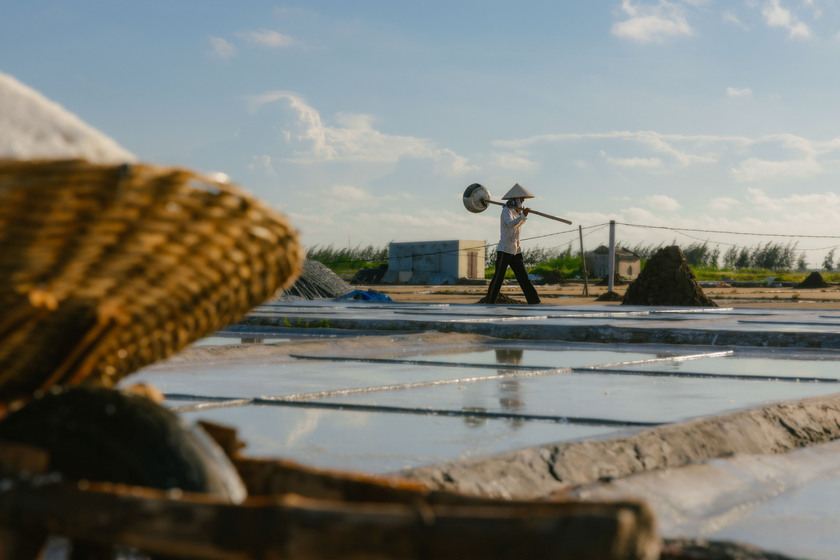
Bach Long salt fields are not only the main source of income for local people...
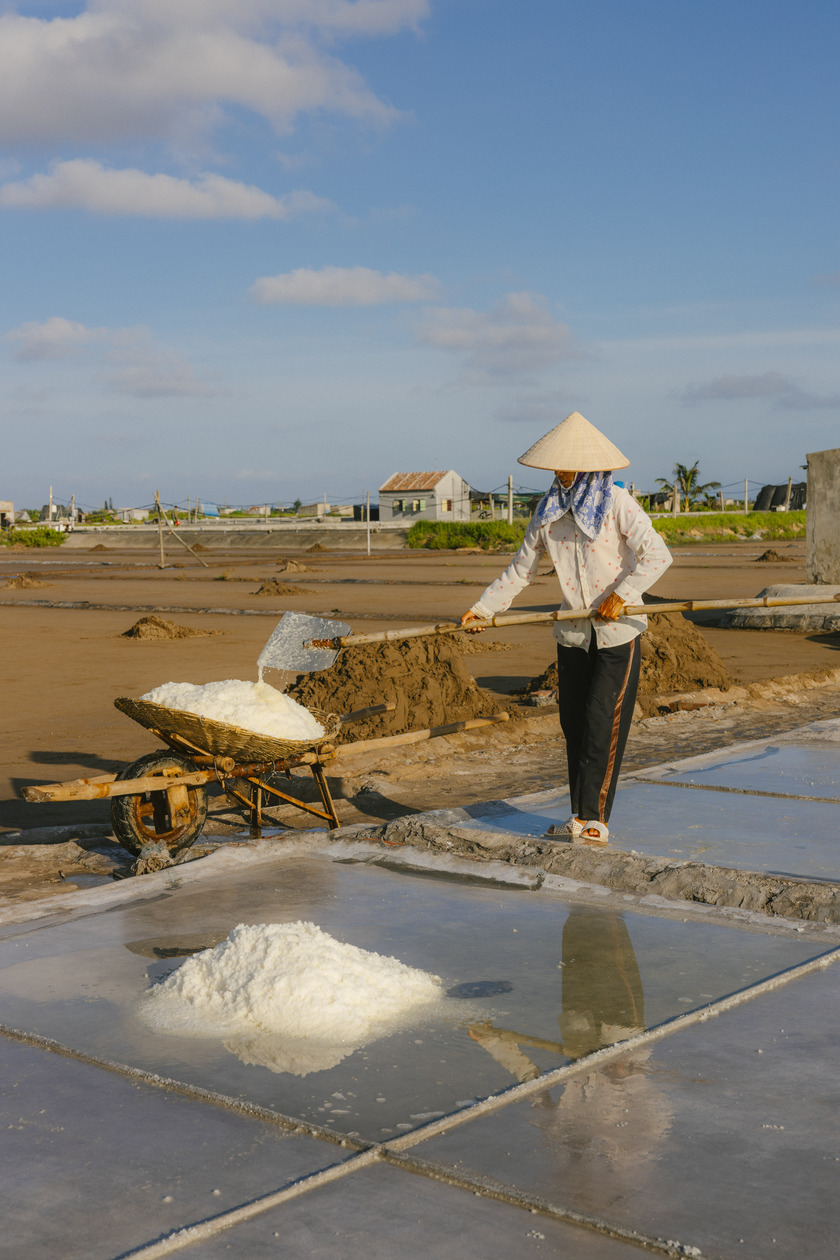
...but also become an attractive tourist destination attracting visitors by the unique and simple beauty of the Vietnamese countryside.
“When I visited the salt fields, I met a salt worker. I asked to visit and experience the field. The first thing I remember is that she happily told me, 'This job requires planting in the morning and harvesting in the afternoon.' Even though it was sunny, it was all thanks to optimism, diligence, and hard work - the beautiful qualities of the Vietnamese people," Hong Son said.
To get pure white salt grains, Bach Long salt workers have to go through a lot of hardship under the scorching sun. Therefore, the most ideal time for tourists to visit Bach Long salt fields is from March to August every year - the busy salt making season of the people here.

Bach Long is honored to be on the list of the most beautiful salt fields in the North.
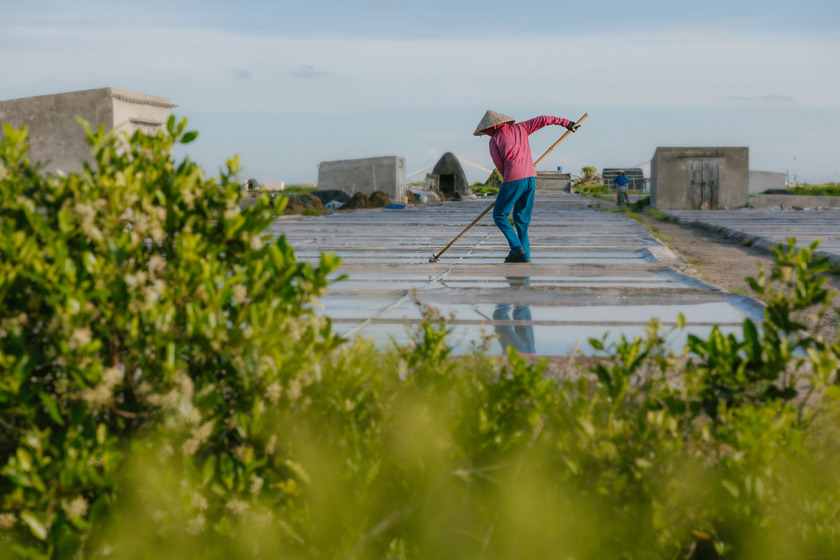
The best time for tourists to visit Bach Long salt fields is from March to August every year.
Coming to Bach Long these days, visitors will be immersed in the enthusiastic working atmosphere of the salt workers. Under the blazing sun, beads of sweat rolling down their tanned faces, they still diligently cultivate each salt field. The stronger the sun, the faster the salt crystallizes, making the harvest more favorable. Bach Long salt fields at this time are like a colorful picture with the pure white of salt, the dark brown of the soil and the blue of the sky.
The photographer said: “When I returned home, I still thought of the image of people working hard to make salt under the scorching sun. They worked enthusiastically, forgetting that they were standing under the hot sun to create the product. They were happy when it was sunny because they could only work when it was sunny, but if it rained, they could not do anything.”
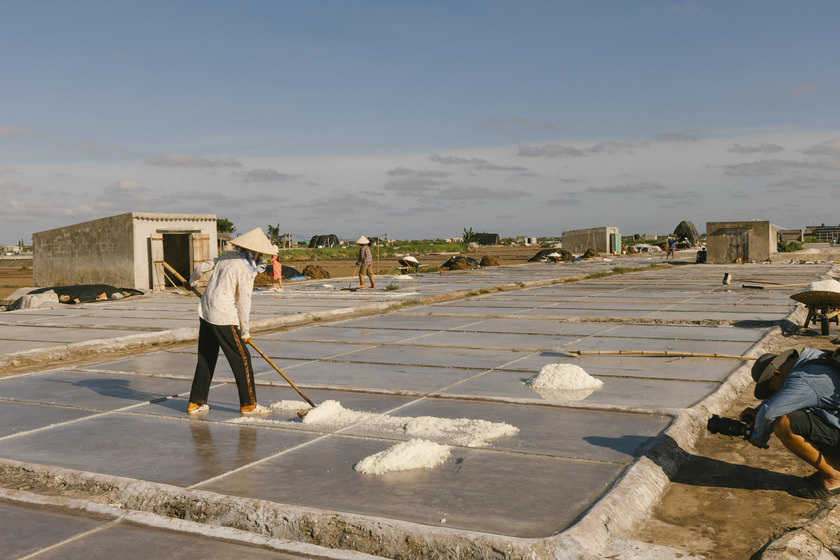
Coming to Bach Long these days, visitors will be immersed in the enthusiastic working atmosphere of salt workers.
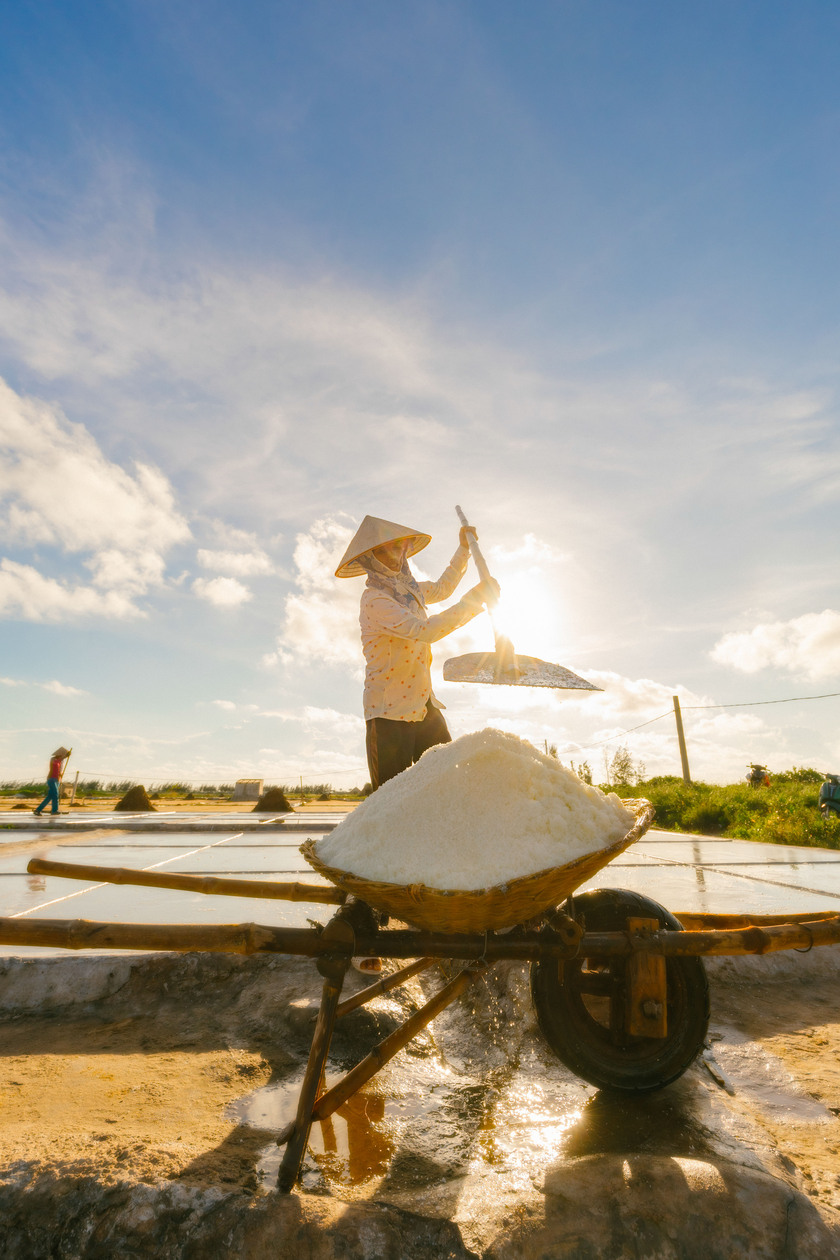
The stronger the sun, the faster the salt crystallizes, making harvesting easier.
The painstaking journey to create pure white salt
To get pure white salt grains on the family dinner table, Bach Long salt farmers have gone through a difficult and arduous journey. From early morning, when the first rays of sunlight have not yet appeared, they are present in the salt fields, working diligently under the sun until late at night.
Unlike the steam salt making method common in the South and Central regions, Bach Long salt is produced using a unique sand drying method. This special feature comes from the fact that Giao Thuy sea has a low salinity concentration, so it requires an additional step of drying and sand filtering to increase the salinity of the seawater.
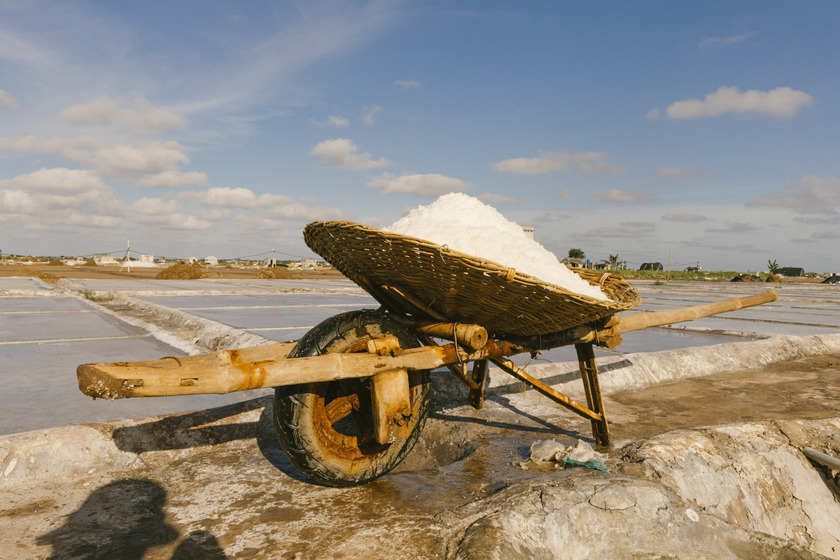
Pure white salt grains

Bach Long salt farmers have gone through a difficult and arduous journey.
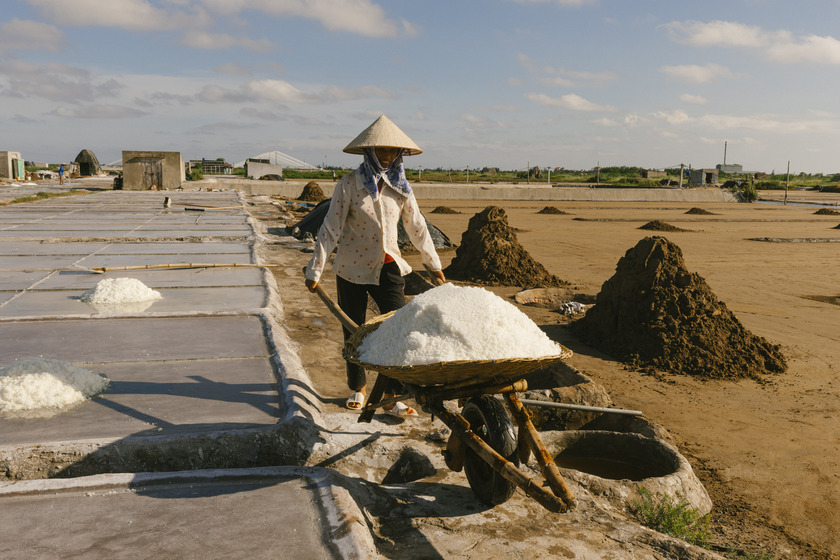
When the first rays of sunlight had not yet appeared, they were already present in the salt fields working hard under the sun until late at night.
Early in the morning, salt workers begin by soaking sand in seawater and leveling the ground. Rectangular plots are created in the field ready for the next step. The seawater-soaked sand is spread out on the drying yard, exposed to the harsh sunlight. Occasionally, salt workers need to add seawater to increase the salinity. After many hours of drying, the seawater evaporates, and the salt crystallizes on the sand surface.
Seawater from the sea is led into the system through the sub-system and the main system to filter out the sand. Then, salt workers use gourds to scoop the brine from the main system and pour it onto the cement-lined drying cells. When the salt has crystallized into small white grains, salt workers will collect it into beds, scoop it onto wheelbarrows and transport it to the warehouse. The salt is carefully preserved to wait for traders to come and buy it.
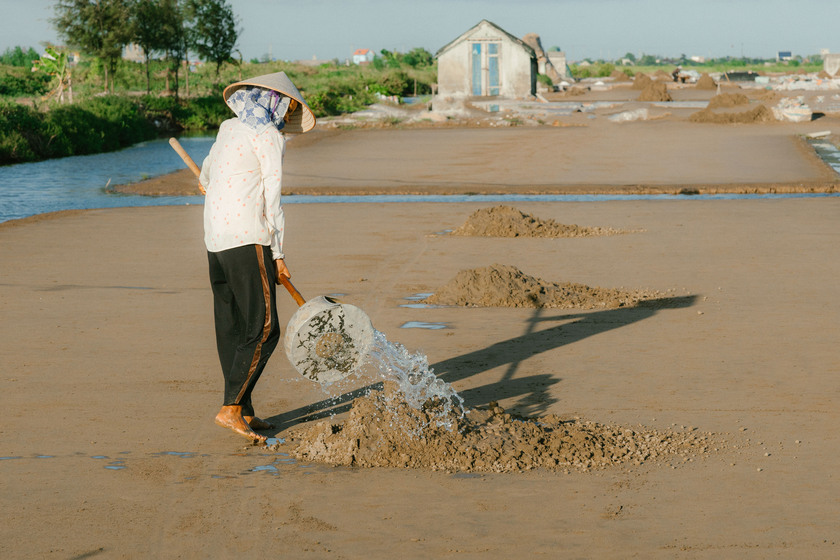
Bach Long salt is produced by a unique sand drying method.

This special feature comes from the fact that Giao Thuy sea area has low salinity, so it is necessary to add the drying and sand filtering step to increase the salinity of the seawater.
The journey of producing Bach Long salt is not only a livelihood but also a traditional cultural beauty of the local people. Each grain of pure white salt is soaked with their sweat and dedication, contributing to the savory flavor of Vietnamese family meals.
Arriving at Bach Long salt field, witnessing every drop of sweat soaking the salt workers’ faces under the scorching sun, Mr. Nguyen Hong Son could not help but be moved. Every moment of hard work, every meticulous gesture in the salt making process were recorded by him in a realistic and vivid way.
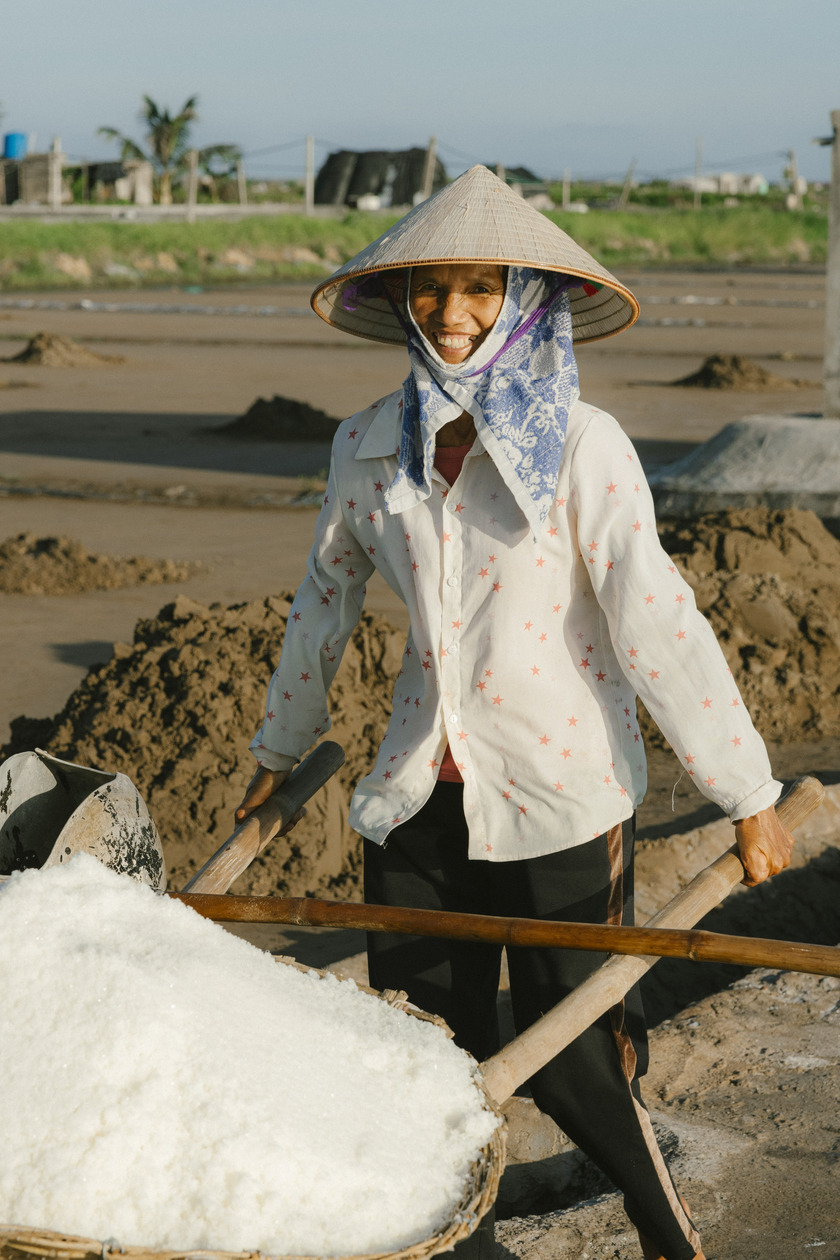
The journey of producing Bach Long salt is not only a livelihood but also a traditional cultural beauty of local people.
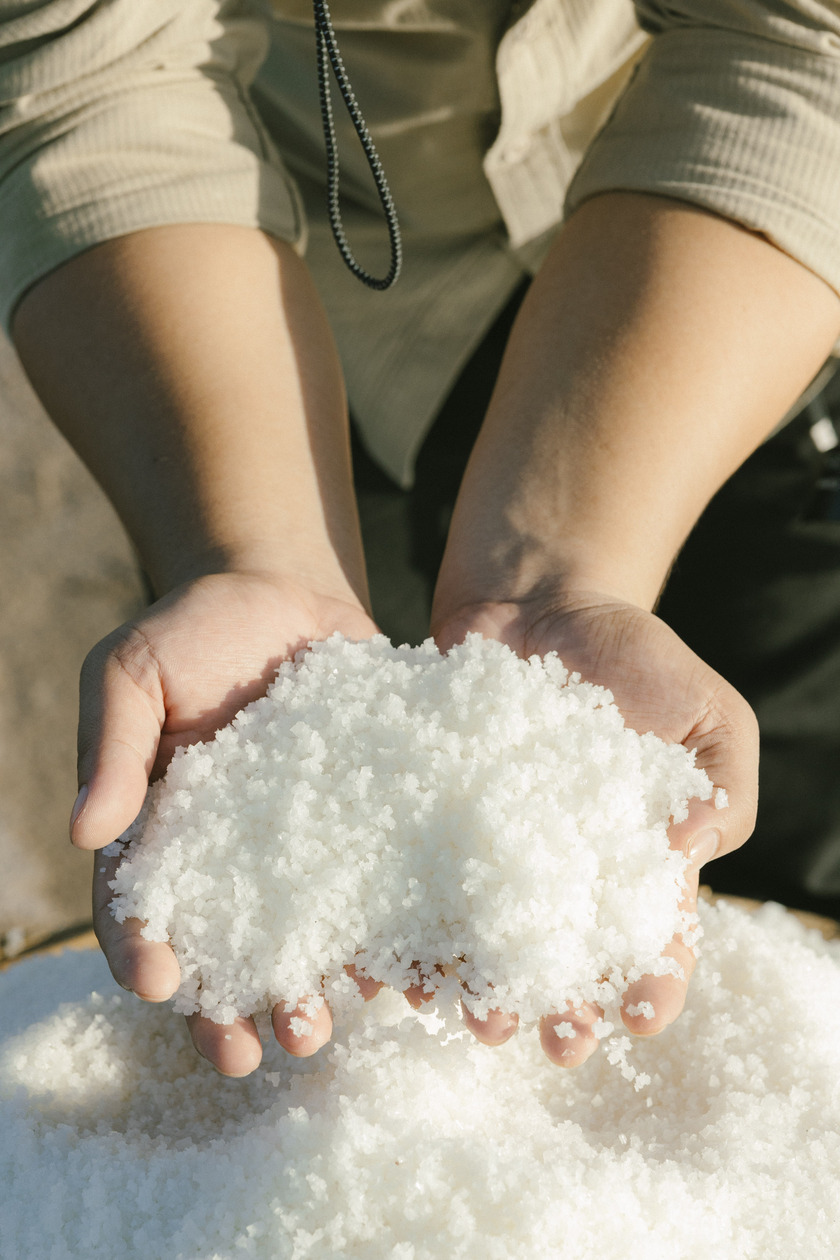
Savory flavors for Vietnamese family meals
With his artistic sensitivity and skillful technique, the photographer has brought to the viewers beautiful frames that fully depict the hard but meaningful life of the salt farmers of Bach Long. Each grain of pure white salt created from the hard work and diligence under the scorching sun from the calloused hands of the workers, when through his lens, suddenly becomes more sparkling and sacred than ever.
“When taking any photo, I will put all my heart and soul into it and choose the right time to take it. I try to exploit all the focal length effects of the lens that I have. I try to take slow photos to keep my mind calm so that I can be more creative with different angles. And finally, I always build stories in each photo so that I don’t get bored. Above all, I want to understand more about Vietnamese craft villages today and always feel nostalgic when taking photos of craft villages. I want to capture the beautiful moments of craft villages and craftspeople so that they don’t fade away,” Hong Son shared.
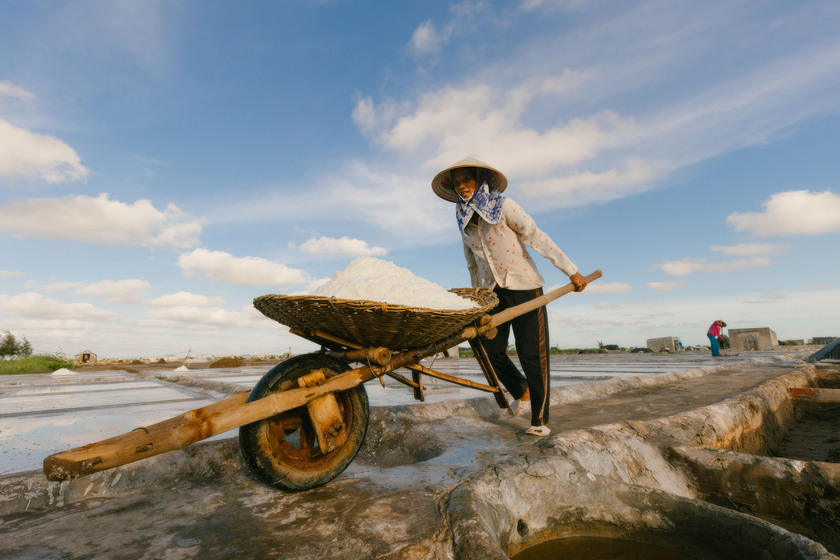
Salt is carefully preserved waiting for traders to come and buy.
